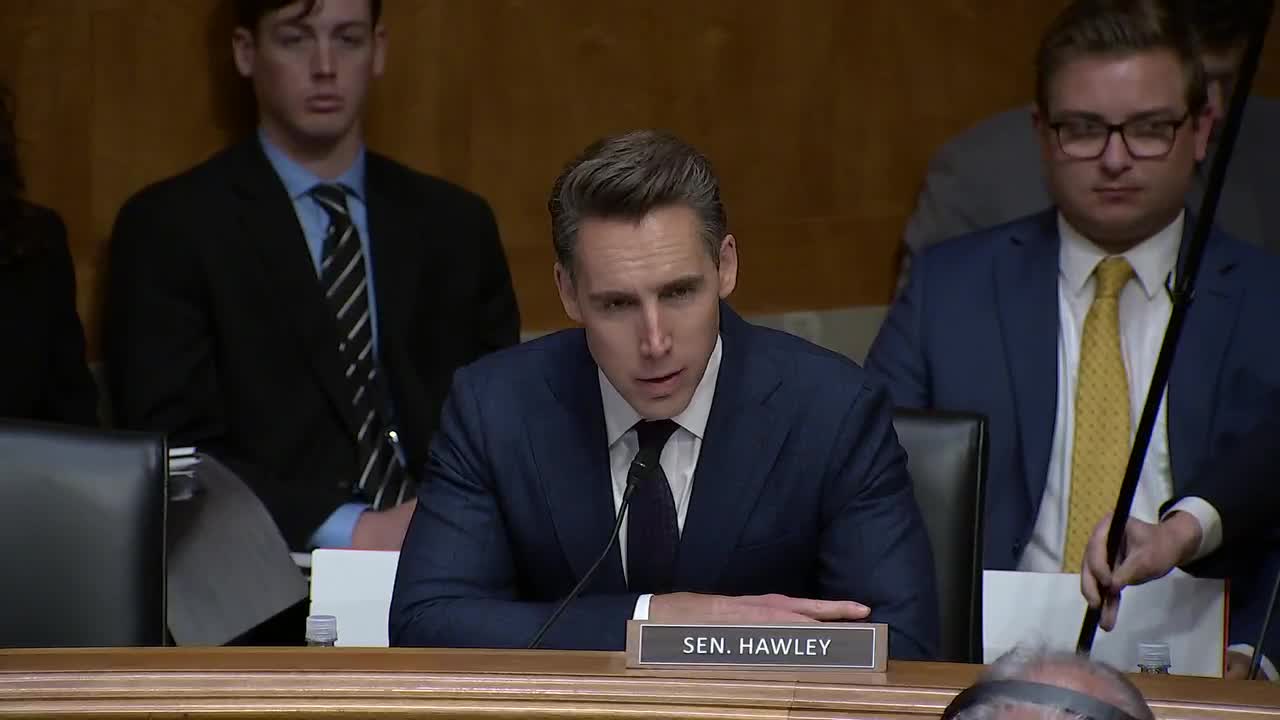FAA Faces Scrutiny Over Boeing Oversight and Whistleblower Claims
September 25, 2024 | Homeland Security and Governmental Affairs: Senate Committee, Standing Committees - House & Senate, Congressional Hearings Compilation
This article was created by AI summarizing key points discussed. AI makes mistakes, so for full details and context, please refer to the video of the full meeting. Please report any errors so we can fix them. Report an error »

In a recent government meeting, FAA officials faced intense scrutiny regarding their oversight of Boeing, particularly in light of whistleblower allegations and safety concerns following the January 5th incident involving an Alaskan Airlines plane. The discussions highlighted potential conflicts of interest between Boeing employees and FAA regulators, raising alarms about the adequacy of regulatory oversight.
FAA Administrator Daniel Whitaker acknowledged that the relationship between the FAA and Boeing has experienced \"various chapters,\" particularly during the development of the 737 MAX. He emphasized the agency's commitment to preventing regulatory capture by rotating inspectors and executives to maintain rigorous oversight. However, concerns were raised about the effectiveness of current inspection practices, with some whistleblowers alleging that Boeing manipulated inspection schedules based on which FAA investigators were more lenient.
The meeting also addressed the adequacy of the FAA's inspector presence at Boeing facilities. Currently, there are 11 inspectors at Boeing's Renton plant, which spans over a million square feet and employs 12,000 workers. Critics argued that this number is insufficient for effective oversight, especially given the scale of operations and the complexity of safety inspections. Whitaker defended the current staffing levels, stating that the inspectors are there to oversee Boeing's quality management system rather than conduct hands-on inspections.
Whistleblower protections were another focal point, with allegations that employees feared retaliation for reporting safety concerns. Whitaker clarified that the FAA does not require whistleblowers to explicitly state they fear retaliation to receive protection, asserting that confidentiality is crucial for encouraging employees to come forward.
The FAA's approach to oversight has shifted since the January incident, with plans to increase the number of inspectors to 55 by the end of the year. However, some lawmakers expressed skepticism about whether this would be enough to ensure public safety and confidence in Boeing's operations. The FAA's strategy includes monitoring key performance metrics related to employee training and production quality, which are intended to provide a clearer picture of Boeing's compliance with safety standards.
As the meeting concluded, officials acknowledged the need for a cultural shift within Boeing to prioritize safety and accountability. The FAA's ongoing efforts to enhance oversight and address whistleblower concerns will be critical in restoring public trust in the aviation giant.
FAA Administrator Daniel Whitaker acknowledged that the relationship between the FAA and Boeing has experienced \"various chapters,\" particularly during the development of the 737 MAX. He emphasized the agency's commitment to preventing regulatory capture by rotating inspectors and executives to maintain rigorous oversight. However, concerns were raised about the effectiveness of current inspection practices, with some whistleblowers alleging that Boeing manipulated inspection schedules based on which FAA investigators were more lenient.
The meeting also addressed the adequacy of the FAA's inspector presence at Boeing facilities. Currently, there are 11 inspectors at Boeing's Renton plant, which spans over a million square feet and employs 12,000 workers. Critics argued that this number is insufficient for effective oversight, especially given the scale of operations and the complexity of safety inspections. Whitaker defended the current staffing levels, stating that the inspectors are there to oversee Boeing's quality management system rather than conduct hands-on inspections.
Whistleblower protections were another focal point, with allegations that employees feared retaliation for reporting safety concerns. Whitaker clarified that the FAA does not require whistleblowers to explicitly state they fear retaliation to receive protection, asserting that confidentiality is crucial for encouraging employees to come forward.
The FAA's approach to oversight has shifted since the January incident, with plans to increase the number of inspectors to 55 by the end of the year. However, some lawmakers expressed skepticism about whether this would be enough to ensure public safety and confidence in Boeing's operations. The FAA's strategy includes monitoring key performance metrics related to employee training and production quality, which are intended to provide a clearer picture of Boeing's compliance with safety standards.
As the meeting concluded, officials acknowledged the need for a cultural shift within Boeing to prioritize safety and accountability. The FAA's ongoing efforts to enhance oversight and address whistleblower concerns will be critical in restoring public trust in the aviation giant.
View full meeting
This article is based on a recent meeting—watch the full video and explore the complete transcript for deeper insights into the discussion.
View full meeting